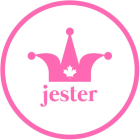There is a very simple explanation for why marketing works.
Human nature. And it’s a good thing, too.
If our brains weren’t capable of taking shortcuts and making rapid calculations below the surface of our awareness, we’d do nothing and be nowhere. We’d be trapped by indecision, emotionless and without meaningful experiences or connections.
Our daily mental shortcuts and pre-programmed biases (and there are a lot of them) explain as much as 95% of our buying behaviour and decisions in general.
We’re excellent rationalizers. We tell ourselves perfectly rational reasons for the decisions we make and hold our heads high. But the science increasingly tells us that our recall of decision-making is profoundly flawed—most of our decisions are made subconsciously long before we have the time to even come up with our reasons.
And again, good thing! Our ancestors didn’t need a peer-reviewed study on lion hunting behaviour to know “climb tree, think later!” None of this means you are powerless or without control, but without these brain hacks, we’d never have made it this far as a species.
And none of this justifies exploitation or manipulation. We’ve wrestled before with the ethics of different marketing tactics, and we are all responsible for the respect and dignity we afford others (and ourselves).
Pretending our heuristics (shortcuts) and biases aren’t there serves no one. The practice of good marketing has a more elegant solution: rather than deny human nature, lean into it! Rather than exploit others for personal gain, create real and lasting value for others, then share it!
Exploitative marketing is for businesses and organizations with sub-par products and services looking to trick customers into buying. But that’s not you. You have something of value on offer, and that’s where real long-term success comes from. Marketing just helps you beat the exploiters out there to your customers and saves us all some time and heartache.
Storyteller Heuristics — Some of Our Favourites
Here at Jester, we believe in the power of stories. And we look for ways to help you tell your story to hook clients and share your value with confidence.
As it turns out, our heuristics and neuro-chemical makeup have us already primed for the right stories.
For starters, people value what you put the most time and money into, including where you’ve gone above and beyond in quality, features and presentation. So don’t give in to pressure to make yourself out as the next prodigy in your field. Most of us still root for the underdog. The underdog works harder and partners skill with character, and you’ll earn your clients’ trust when they see those traits in your story.
Your audience is also looking for a story that is personal. To them.
The bystander effect or Genovese syndrome, one of our more alarming biases, makes us less likely to act when called upon if called to act as part of a group. We freeze up, assuming someone else will step in first. But behavioural scientists discovered an easy workaround to get people to take action: single them out. Point at one person in your audience and make them responsible. Make their phone call the one that saves a life, their donation the one that cures a disease, their purchase the one that sets them apart from the crowd. All it takes is getting a little more comfortable with the word “you.”
The most important reason to make your story less about you and more about your audience is our collective need for inspiration and purpose. The stories that change our lives are heroic, moral, altruistic. They’re about what you are doing to serve your audience.
When we hear a story like that, our bodies unleash a wave of chemicals (dopamine, serotonin, endorphins and oxytocin) that improve recall, motivation, receptiveness, relaxation, and feelings of connection and trust with the storyteller and other listeners. The right story connects your audience not only to you but also to each other, creating a community around your brand.
And finally, the right story needs to be told the right way. Every storyteller and every brand has a unique voice, and you need to find yours.
Heuristics are just tools you can adapt to your unique voice and context.
Try building anticipation and curiosity by dropping hints and creating powerful reveals later. Information gaps keep people hungry and engaged, so they’ll listen to the rest of your story while you build up suspense.
Use framing to trigger your client’s sense of ownership (endowment effect). Don’t just offer them a deal—tell them they have unused credit!
Pair urgency with scarcity and create visual comparisons to anchor your product’s value. Remember, we literally experience something differently when we believe it has greater value.
And keep it simple. Our short-term memory thinks in threes and fours, our unconscious mind has the attention and reading level of a seven-year-old, and our brains interpret ease of comprehension as a mark of credibility (even when it isn’t).
Learning to harness these tools will align your brand with your audience’s unconscious mind. You’ll be leaning into human nature instead of struggling against it. And you’ll tell your story with more confidence and self-respect, giving the value you have on offer the greatest chance of reaching your audience and making a real impact.
And as always, that’s a story we’d love to hear.
